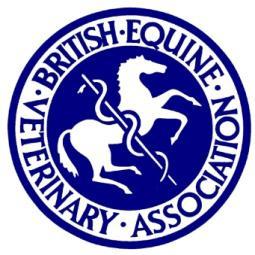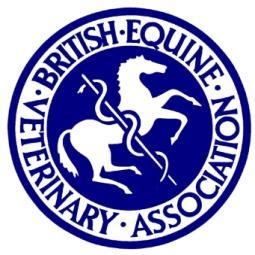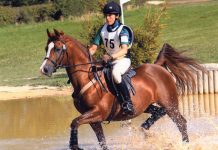Embryology is a hotly contested subject across numerous species as it raises some difficult moral questions. The Equine Veterinary Journal (EVJ) aims to shed light on its role in equine reproduction with a special focus section in the May issue. Four research papers examine some of the latest methods, protocols and success factors involving embryo transfer while the introductory editorial from Madeleine Campbell, European Diplomate in both Equine Reproduction and in Animal Welfare Science, Ethics and Law, examines the ethics of the research involving equine embryos.
There have been significant advances in both natural breeding and artificial breeding techniques in horses over the past 15 years. Not only have artificial insemination success rates improved but embryo transfer has also become a common procedure. By transferring an embryo from a donor mare into the uterus of a recipient mare a donor mare can produce more than one foal in a year and still remain in competition. It is a valuable technique for older mares that may not be able to carry a foal to term. It is also becoming an important technique to support the survival of rare breeds.
Madeleine Campbell, in her introductory editorial, explores whether we should be worried about embryos for their own sake rather than for the sake of the animals that they could become. She concludes that under current legislation and based on current scientific knowledge there are no coherent grounds for ethical concerns about equine embryos, defined as being less than 42 days of gestational age, being either damaged or killed.
Successful embryo transfer and consequent pregnancy is dependent on many factors, including timing. One of the studies looked at the length of oestrus on the likelihood of pregnancy and early embryo loss in recipient mares after embryo transfer, concluding that the prospect of pregnancy is reduced in those with a short preceding oestrus.
Vitrification success rates are currently low for immature equine oocytes. One of the papers compared two vitrification protocols and identified that the use of corona radiata (CR oocytes), high concentrations of cryoprotective agents (CPAs) and a short exposure time may be key to uncompromised embryonic development.
To date few studies have been published about cryopreservation and embryo assessment in horses and donkeys. A new Spanish paper disclosed that vitrified horse and donkey embryos did not show higher susceptibility to cell damage than those preserved by slow freezing.
It is known that the size and breed of the recipient mare can affect foetal development and subsequent post-natal growth rate and insulin sensitivity in foals. The final study in the issue looks at placental alterations in structure and function in intra-uterine growth-retarded horses. It concludes that placental structure and gene expression are modified after embryo transfer into a smaller or larger breed than that of the embryo, contributing to post-natal growth restriction or enhancement.
“While some may perceive embryo science to be all about commercial advantage and convenience in breeding competition horses there is more to it than that,” Said Celia Marr, editor of the Equine Veterinary Journal. “Advanced reproduction techniques including embryo transfer, are playing a growing role in the survival of the UK’s rare breeds and this is of unquestionable importance.”
Tullis Matson, Founder and Managing Director of Stallion AI Services works very closely with the Rare Breed Survival Trust to help preserve the genes of rare equines. He said: “It’s undeniable that new reproduction techniques are a life raft for rare breeds. Whilst we can preserve the male genetic line through semen freezing we don’t have this option with the female line but embryo transfer offers us hope in widening the gene pool of our valuable female lines. We have already successfully produced a Suffolk Punch foal using embryo transfer. Our next steps to help with rare breed preservation are to set up a tissue bank and to look at options for sexing semen.”
The special focus is available free online at:
https://onlinelibrary.wiley.com/toc/20423306/50/3
References
-
J. Cuervo-Arango, A. N. Claes, M. Ruijter-Villani and T. A. Stout (2018) Likelihood of pregnancy after embryo transfer is reduced in recipient mares with a short preceding oestrus. http://onlinelibrary.wiley.com/doi/10.1111/evj.12739/full
-
N. Ortiz-Escribano, O. Bogado Pascottini, H. Woelders, L. Vandenberghe, C. De Schauwer, J. Govaere, E. Van den Abbeel, T. Vullers, C. Ververs, K. Roels, M. Van De Velde, A. Van Soom and K. Smits (2018) An improved vitrification protocol for equine immature oocytes, resulting in a first live foal. http://onlinelibrary.wiley.com/doi/10.1111/evj.12747/full
-
C. C. Pérez-Marín, G. Vizuete, R. Vazquez-Martinez and J. J. Galisteo (2018) Comparison of different cryopreservation methods for horse and donkey embryos. http://onlinelibrary.wiley.com/doi/10.1111/evj.12777/full
-
M. Robles P. M. Peugnet S. A. Valentino C. Dubois M. Dahirel M.‐C. Aubrière F. Reigner D. Serteyn L. Wimel A. Couturier‐Tarrade P. Chavatte‐Palmer (2018) Placental alterations in structure and function in intra-uterine growth-retarded horses. https://onlinelibrary.wiley.com/doi/10.1111/evj.12761












